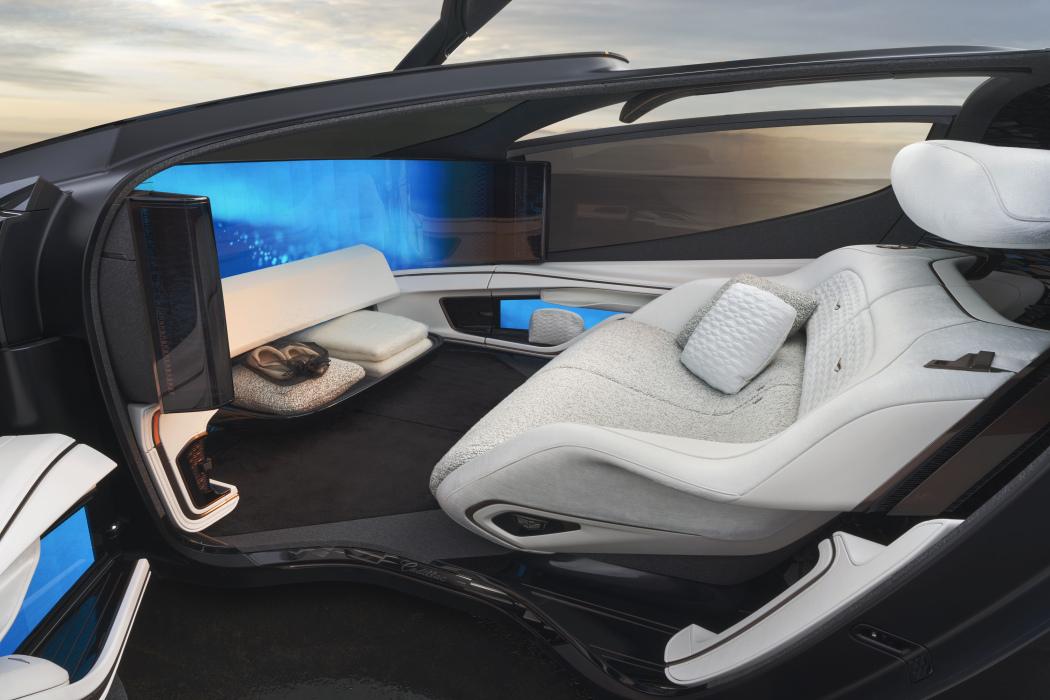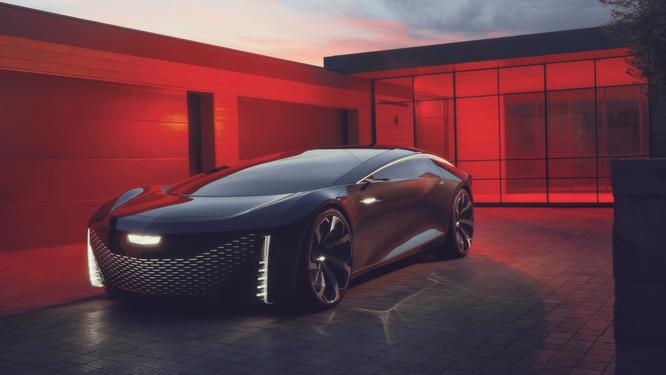GM's Self-Driving Cadillac Concept Is All About Luxury
General Motors introduced its vision for autonomous cars at CES today with a concept vehicle from Cadillac. The result is an electric-powered luxury sedan that focuses on comfort, while off-loading the driving responsibilities to the onboard computer.
The car is called InnerSpace, and it looks like it belongs in a science-fiction film. Even GM's idea for the vehicle comes off as a little dystopian. “The concept was developed for our demanding world, where intimacy and relaxation have become precious and rare commodities,” said Michael Simcoe, GM’s VP for global design.
GM proposes filling the void by offering a two-seat luxury car, where passengers can sit back and relax. The InnerSpace vehicle is designed to be entirely autonomous to the point it can even recognize you when approaching the car doors. Passengers can then interact with the car’s cabin through touch controls and voice commands.

Because the car is entirely self-driving, GM nixed the steering wheel and even the traditional front window. Instead, the company placed a large wraparound LED display, which can switch between three modes: augmented reality, entertainment, and wellness recovery.
For even more convenience, the roof of the car will lift up as the doors open, making it easier for passengers to enter and exit the vehicle.
In addition, the battery modules have been spread across the vehicle, allowing GM to make the car roomier with a low-profile floor and a sports car-like seating position.
The InnerSpace is part of Cadillac’s Halo portfolio, which focuses on concept luxury vehicles that can drive on their own. At last year’s CES, GM debuted two other vehicles in the portfolio: an electric flying car and roomier, road-based taxi.
“Electrification and autonomous driving will fundamentally change the role of vehicles and the experiences customers have with them,” said GM Executive Director Bryan Nesbitt. “We’re exploring where that will go with these innovative concepts.”
However, these concept projects are geared for the "next decade and beyond," according to Nesbitt. So it may take a long time before they become reality, if ever.



